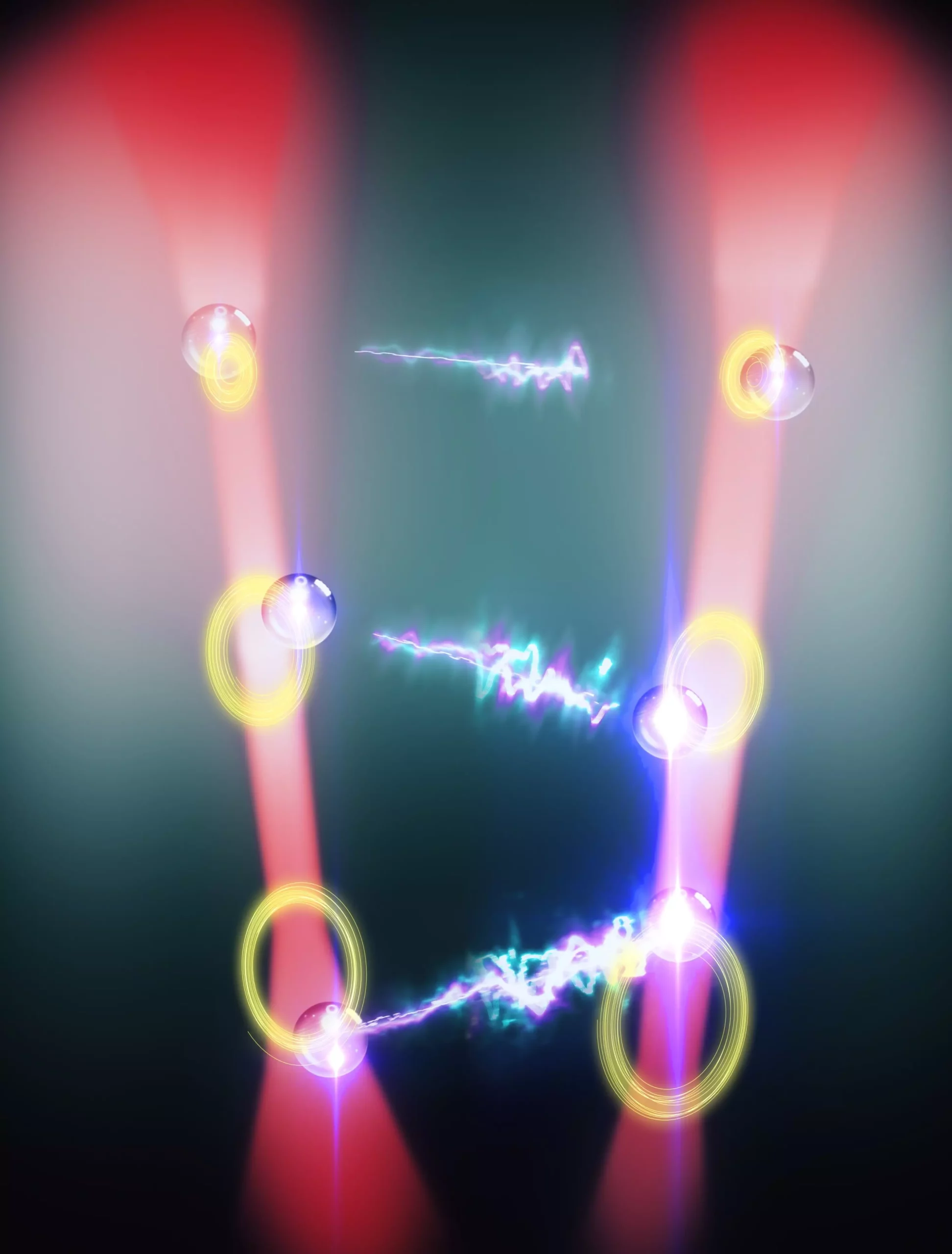In a striking advancement at the crossroads of quantum physics and optical technology, researchers from the University of Vienna have unveiled groundbreaking insights into non-reciprocal interactions using optically-trapped glass nanoparticles. The study, published in the prestigious journal Nature Physics, pushes the boundaries of traditional optical levitation by exploring non-Hermitian and non-linear dynamics. This breakthrough not only opens new avenues in the realm of optical manipulations but also lays the foundation for potential transformative applications in sensor technology and quantum mechanics.
Understanding Non-Reciprocity
At its core, non-reciprocity plays a critical role in various natural phenomena. Unlike traditional forces such as electromagnetism and gravity, where interactions are balanced and predictable, non-reciprocal interactions are marked by asymmetrical forces. Consider the predator-prey relationship; while a predator exerts a force to attract its prey, the prey simultaneously exerts a reaction to escape, resulting in dynamic, non-reciprocal behavior. This interesting dynamic is what researchers are now harnessing through innovative optical techniques.
The team, led by Uroš Delić, employed a system of optical tweezers—technology that allows very fine manipulation of particles—originally popularized by Nobel Laureate Arthur Ashkin in 2018. By manipulating the laser beams’ phases and adjusting the distances between nanoparticles, they initiated non-reciprocal interactions akin to a clandestine chase between entities—one representing the predator and the other symbolizing the prey.
The Experimental Design
What sets this experiment apart is its tabletop setup, making it both accessible and highly controllable. Manuel Reisenbauer, a Ph.D. researcher in the team, expressed excitement over the user-friendly nature of this system, comparing the manipulation and integration of lasers to programming a computer game. This level of control over intricate physical systems is rarely achievable and speaks volumes about the potential for innovative breakthroughs that could follow.
As the team conducted their experiments, they pioneered the ability to create constructive and destructive optical interferences—where one particle experienced forces that amplified its motion, while the other moved in reaction. This facilitated a fascinating oscillatory dance, with the two particles behaving in a manner that reflects a deep-seated mathematical beauty underlying their coupled dynamics.
Breaking Symmetries
The implications of breaking parity-time reversal symmetry were evident when the particles, initially interacting purely through mechanical oscillation, began to exhibit anti-reciprocal interactions. This shift altered the trajectory of their movements, causing them to follow one another in a continuous motion characterized by ceaseless energy transfer. The interlinked oscillations created a “limit cycle”—a scenario where particles maintain oscillation amplitudes that defy simple decay due to any external perturbations.
Benjamin Stickler, the lead theorist on the project, resonated with this dramatic shift, noting that such non-reciprocal dynamics carry essential parallels to various systems in nature and technology, such as lasers and nanomechanical devices. The discovery that these interactions can amplify or stabilize motion is particularly intriguing, suggesting a pathway to discovering even richer dynamics in larger systems.
A Bright Future Ahead
The confluence of quantum mechanics and optical technology exemplified in this research raises promising prospects for future applications. By innovating ways to harness non-reciprocal forces, scientists could significantly enhance sensing technologies that rely on both force and torque measurements. The prospect of leveraging these findings to bridge towards quantum regimes offers tantalizing possibilities.
Moreover, by scaling these interactions to observe collective behaviors within larger ensembles of nanoparticles, researchers could explore the vast unexplored territories of non-reciprocal dynamics in quantum systems. The potential for reshaping fields such as quantum computing and materials science suggests that we are only at the beginning of what this framework could achieve.
Through the lens of this pioneering study, the marriage of simplicity and sophistication in experimental physics is not just an exciting development; it represents a significant step towards harnessing the inherent complexities of nature for transformative technology. The implications of these interactions stretch beyond traditional boundaries, suggesting a future where the intricate dance of particles might offer solutions to complex scientific challenges.

